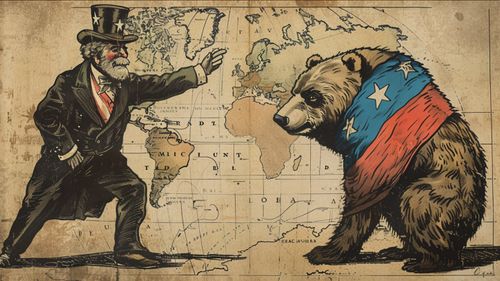How the Truman Doctrine and the Marshall Plan Changed History (Summary)
Mar 22, 2024 · 2 mins read
0
Share

The Truman Doctrine and the Marshall Plan: twin pillars that held up the Western world during the Cold War, shaping modern geopolitics more than any superhero could.
Save
Share
Born from the ashes of WWII, the Truman Doctrine in 1947 was America's bold declaration to contain communism, essentially drawing the battle lines for the Cold War.
Save
Share
Imagine telling your neighbor you'll pay for their fence to keep a wild bear out—that's the Truman Doctrine, but the bear was communism, and the fence was military aid.
Save
Share
Then came the Marshall Plan in 1948, like a massive group-funding project for Europe's recovery, proving that sometimes, throwing money at a problem does help.
Save
Share
The Marshall Plan wasn't just about rebuilding; it was America's chess move to keep Europe capitalist and out of the USSR's influence—like buying loyalty with the biggest economic hug.
Save
Share
Critics argue these policies turned the Cold War's temperature up, making the USSR feel cornered. It's like poking a bear and then wondering why it's angry.
Save
Share
The Truman Doctrine's promise of support had America jet-setting across the globe, from Greece to Korea, in a bid to keep communism in check—Uncle Sam's version of a world tour.
Save
Share
Meanwhile, the Marshall Plan proved to be a savvy PR move, turning war-torn Europe into a showcase of prosperity and democracy, all with a stamp of approval that might as well have read: "Made in the USA".
Save
Share
These policies didn't just shape the Cold War; they laid the groundwork for NATO and the EU, proving that sometimes, the pen (and the wallet) is mightier than the sword.
Save
Share
In the end, the Truman Doctrine and the Marshall Plan were like the dynamic duo of international policy, fighting the spread of communism with a one-two punch of military might and economic muscle, altering the course of history.
Save
Share
0